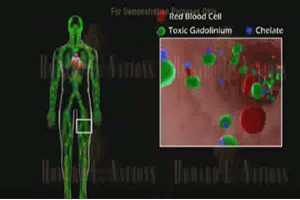
NSF has Again Found a Strong Link Between the Condition and the Use of Gadolinium Contrast Dye. A new study of people with Nephrogenic Systemic Fibrosis (NSF) has again found a strong link between the condition and the use of gadolinium contrast dyes. The study, conducted by researchers at Vanderbilt University, concludes that gadolinium contrast dyes […]

NSF has Again Found a Strong Link Between the Condition and the Use of Gadolinium Contrast Dye. A new study of people with Nephrogenic Systemic Fibrosis (NSF) has again found a strong link between the condition and the use of gadolinium contrast dyes. The study, conducted by researchers at Vanderbilt University, concludes that gadolinium contrast dyes should be used “judiciously” in patients with pre-existing kidney disease, and their benefits should be carefully weighed against their risks.
NSF is a devastating condition that affects people with pre-existing kidney problems. There is currently no cure for NSF and no one understands its specific cause. The disorder is characterized by high blood pressure, burning, itching, swelling and hardening of the skin. Other symptoms include red or dark patches on the skin; pain deep in the hip bones or ribs and muscle weakness. NSF can progress to the point of causing severe stiffness in joints, and it can lead to death.
A growing mountain of evidence has linked NSF to gadolinium contrast dyes used in MRI and MRA studies, and it is theorized that people with kidney problems may not be able to quickly eliminate gadolinium from their body. In September 2007, the Food & Drug Administration (FDA) asked the manufacturers of gadolinium contrast dyes to add a black box warning to the product labels about its association with NSF. The FDA also warned that patients with kidney disease should avoid gadolinium contrast agents.
Since then, hundreds of NSF victims and their families have filed lawsuits in state and federal courts against the makers of gadolinium contrast dyes for their injuries. As of September 24, there were 287 NSF lawsuits pending in the Multidistrict Litigation. Another 104 lawsuits have been filed in various state courts throughout the U.S. Gadolinium dye makers Bayer HealthCare Pharmaceuticals, Bracco Diagnostics, GE Healthcare and Mallinckrodt have all been named as defendants in the cases.
For their study, researchers at Vanderbilt analyzed data from case series reports, NSF patient databases, NSF case reports submitted to the FDA after gadolinium contrast agent exposure and retrospective case control studies. According to the study abstract, there was a strong association between the use of gadolinium contrast dyes used in MRI procedures, and the subsequent development of NSF in patients with kidney disease.
The study abstract said that occurrence of NSF after gadolinium contrast agent exposure varied from negligible up to 2% to 5% in select high risk clinical situations. The study also found that the risk of NSF depends on the degree of renal dysfunction, dose of contrast agent, gadolinium contrast agent stability and severity a patient’s kidney disease.
The personal injury attorneys at Parker Waichman LLP offer free, no-obligation case evaluations. For more information, fill out our online contact form or call 1-800-YOURLAWYER (1-800-968-7529).


